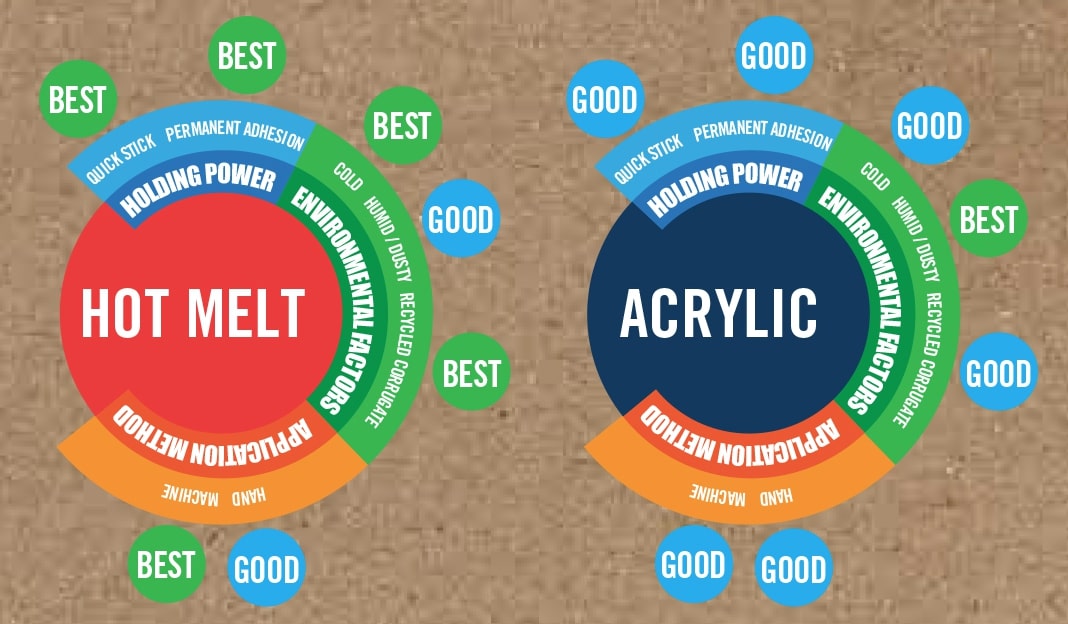In our previous posts (Packing Tape BasicsandAcrylic vs. Hot Melt Tape) we explored the differences betweenacrylicand hot melt tapes. After determining whether to use hot melt tape or acrylic tape, the next decision is the best application method for the tape. The two primary tape application methods are manual or mechanical. Both have pros and cons and both have their place in the various carton sealing situations.
For manual or hand-sealing applications, acrylic tapes are usually the good option. When applying tape with a tape-gun, consider the unwind quality of the tape. The last thing you want is for employees to be spend more time tinkering with the tape-gun than applying tape to your cartons. Also, consider the loose level of the tape as it unwinds. This is particularly important when cartons are being sealed near others or in an environment that is sensitive to background noises. The tighter the unwind quality, the easier it will be to cut after sealing a carton. Good tack quality is vital as well as it helps “grab” the surface quickly so it can stay in place during the application process. A strong film backing is also important to prevent stretching or breaking. All of these qualities of tape for manual application are key to successful carton sealing.
When it comes to the automated application of tape, hot melt tapes lend themselves to exceeding demand and ensure production lines remain running. To reduce stretching and tearing, the best hot melt tapes provide easy unwind tension. Their instant adhesion quality provides brief transition times so cartons can be palletized immediately. Hot melt tapes in an automated process have fantastic holding qualities that ensure cartons remained sealed during the stress applied in storing, shipping, and delivery. A key advantage is to an automated carton sealing process is the long roll lengths which allow for increased uptime and rapid application.
When choosing hot melt tapes in an automated process pay special attention to shear strength. The shear strength refers to the ability of a tape to maintain it’s strength during high levels of stress. A higher strength shear will endure the usual stress applied during the sealing process. Sometimes, a weaker shear tape will lose it’s grip and separate from the corrugated surface or the tape backing during stress applications and this leads to unsealed cartons, loss of product, and the closure of production lines.
Some production environments utilize robotics with suction to move boxes. A quality shear strength tape can withstand such stress, while a low-quality tape will not. Shear strength also plays a role when cartons are overfilled or when think-walled cartons are used. In these situations the pressure on the tape is from the interior of the carton, not the exterior. In the same way heavy cartons produce a downward force on a carton that will also test the shear strength of a tape on the bottom of the carton. Ensuring the hot melt tape you use will withstand these demands will increase your uptime as well as ensure your product arrives in-tact.
The quality of both manual and automated applied tapes helps keep production lines and processes up faster and longer. Quality tapes will be consistent in shear strength, backing strength, adhesion quality, and easy of application.
SSI Packaging group has been experts in carton sealing tape for over 40 years. Throughout this time, we have seen many tape manufactures attempt to provide sub-par tape while others have produced high-quality tape and sealing products. Give us a call or send us an email and we’ll make the time to help you decide the best carton sealing tape for your specific application at a reasonable price.
At SSI Packaging Group “we help you pack and tack your image”®. Call today –(804) 649-1111

